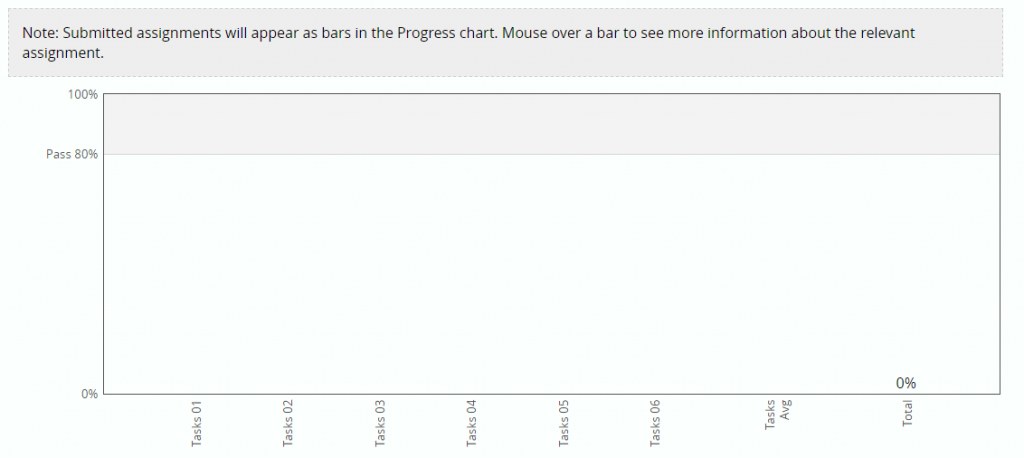Positives:
I thought the readings were very practical and influential towards completion of this assignment. I particularly enjoyed the Jenkins (2004) and Gibbs & Simpson (2005) readings, which helped further consolidate my views on formative assessment. I was quite happy to see some Dylan Williams quotes in latter; I’ve been fortunate enough to see him speak, in person, and align highly with this very knowledgeable man. Conrad’s (2000) Instructional Design reading will prove very useful not only for this course, but serves as a great “How to” manual for online course design in the future.
Second, the learning curve for this assignment was steep and challenging – I mean this in a good way. The best learning becomes of this style of rigor in an assignment framed within one’s Vygotskian ZPD. My knowledge in designing a course within Moodle was nil. I felt that the authentic learning taking place in the backdrop of this assignment made the learning curve smoother. I like that I can apply it to the direct context of my practice, thus motivating me further to get it right and doing the course properly.
Finally, one main benefit of the tech conference that my school just recently hosted (further described below) was that there were quite a few LMS presenters. I was fortunate to attend one on Moodle. My time in this seminar allowed me to feel confident plugging away on the assignment that needed to be created afterwards.
Things that could have been better:
First, this assignment was particularly problematic for me because of the calendar alignment of key events at my school. We were hosting the first annual tech conference in my region and that ate up every spare moment of my time for the previous three weeks organizing and getting ready. Not only was I presenting, but I was also prepping three elementary grade levels of children to present in front of an audience of over 150 adults. The week after this event was book week, which is another ridiculously busy time at our school. All of this was on top of my regular work commitments, including after school activities and coaching.
Secondly, I found the success criteria on the assessment of this assignment to be a bit ambiguous and spent much of my time trying to hash out issues that apparently weren’t being assessed (from Professor’s email after several previous attempts), yet were communicated so in course design. Largely, I had difficulty with access restrictions to my forums and was trying to hash it out on my own and with the professor. To be fair, the professor was trying to help, but the issue has yet to be resolved. Here is the rubric, laid out on the course website for the assignment:
The instructor will be using the following criteria in assessing your assignment:
- Whether the introductory module provides the course structure, which is logically coherent and easy to navigate through;
- How clear the course learning objectives are translated into the elements of course structure and the introductory module design;
- Whether the suggested assessment and communication methods/tools fit the learning objectives, and whether the reasons for using these methods/tools are clearly formulated;
- How appealing the overall look of the Introductory Module is, and whether the graphic elements are used appropriately and optimize the learning experience;
- Whether the navigation tools and design elements function properly;
- Whether the project settings make it accessible to peers in this course section.
Point five and six, in my opinion, directly relate to inaccessibility of forums. I was spending a large amount of time in this area so I could reach the success criteria, yet the way I was given access in Moodle limited me from doing so.
Furthermore, I think it’s a serious flaw in the way that Moodle courses are being designed. I don’t like how we, as ETEC565a students, are lower in the hierarchy in terms of administrators or moderators. I get that synergy in terms of the collating of student resources was a determining factor in the way things are done currently. From the professor’s perspective, it is a much easier way to view everyone’s projects and promote viewership amongst the course. However, Moodle is a free, open-sourced LMS – these are two HUGE advantages. This means that there’s no clear reasons from allowing students in ETEC565a from signing up to their own Moodle accounts and then sharing their course with others, including the professor. Advantages of this would allow creators to update to more current Moodle versions and access to more user-friendly third party skins. Thus, making design, creation and the overall user-interface more visually stimulating and easier to manipulate.



